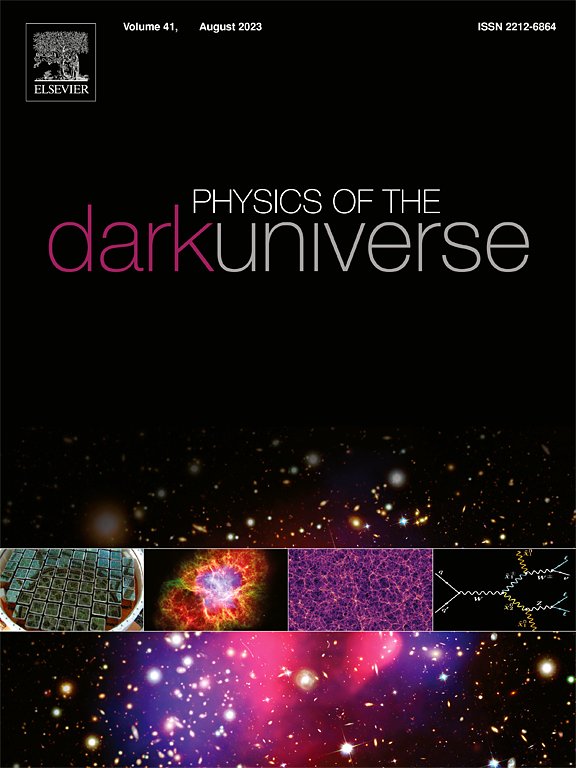Black holes and their shadows in F(R) gravity
IF 5
2区 物理与天体物理
Q1 ASTRONOMY & ASTROPHYSICS
引用次数: 0
Abstract
We investigate the radii of the photon sphere and the black hole shadow in the framework of gravity. For this purpose, we derive the field equation for the corresponding theory when the general spherically symmetric and static configuration is considered. This equation is the third-order differential equation with respect to , where is the radial coordinate. Solving the equation, we find as a function of , . By using the assumed and obtained geometry, one can calculate the scalar curvature as a function of , , which could be solved with respect to as . Then one finds the functional form of as a function of the scalar curvature , .
We then solve the corresponding equation perturbatively by assuming the variation of the geometry from the Schwarzschild spacetime could be small and also the deviation of gravity from Einstein’s gravity is small. As a result, we obtain an inhomogeneous linear differential equation and solve the equation in the region around the radius of the photon sphere. This is a quite general approach which may be adopted for any modified gravity. With the help of the obtained solutions, we calculate the radii of the photon sphere and the black hole shadow and find the parameter regions consistent with the observations of M87 and Sgr A.
求助全文
约1分钟内获得全文
求助全文
来源期刊

Physics of the Dark Universe
ASTRONOMY & ASTROPHYSICS-
CiteScore
9.60
自引率
7.30%
发文量
118
审稿时长
61 days
期刊介绍:
Physics of the Dark Universe is an innovative online-only journal that offers rapid publication of peer-reviewed, original research articles considered of high scientific impact.
The journal is focused on the understanding of Dark Matter, Dark Energy, Early Universe, gravitational waves and neutrinos, covering all theoretical, experimental and phenomenological aspects.
 求助内容:
求助内容: 应助结果提醒方式:
应助结果提醒方式:


